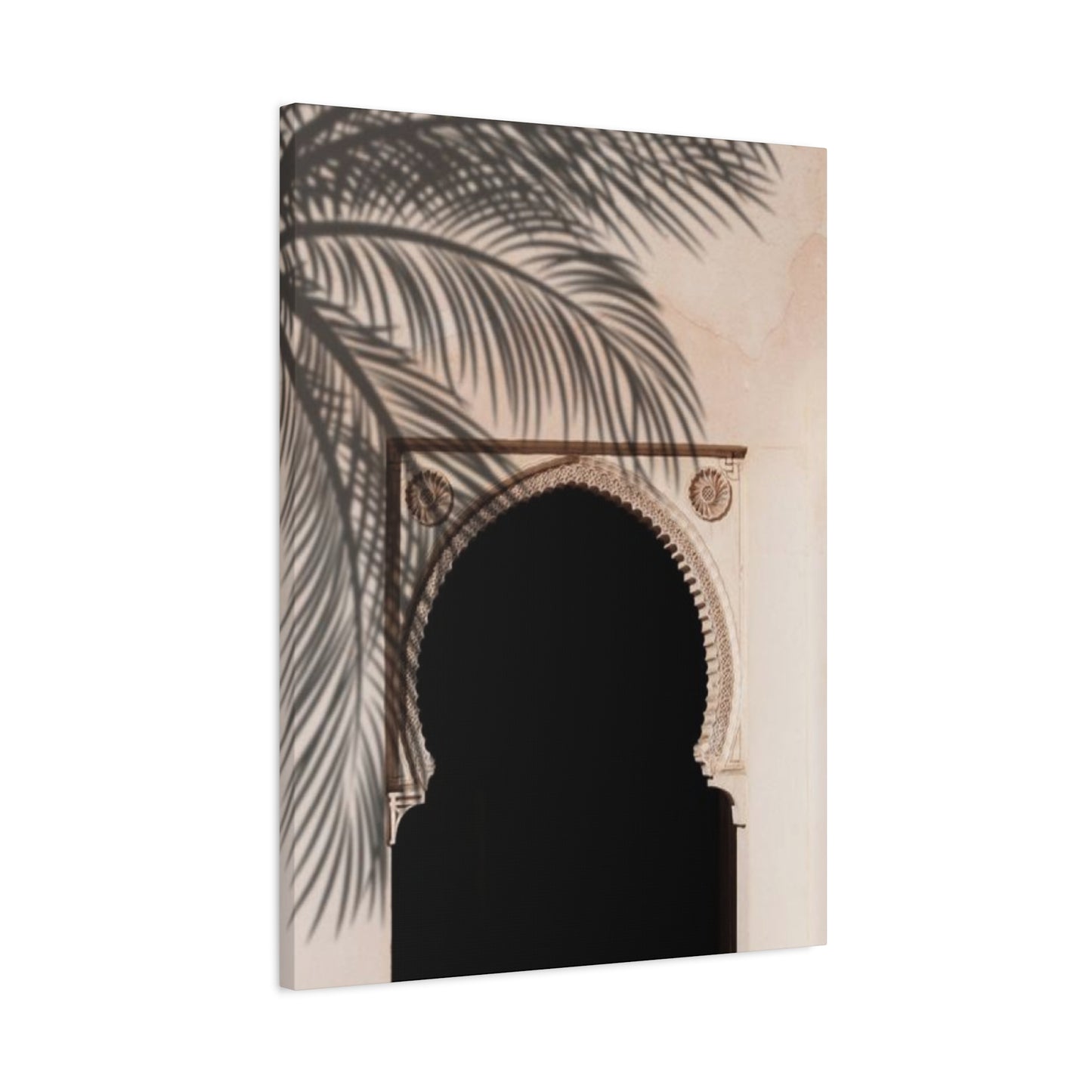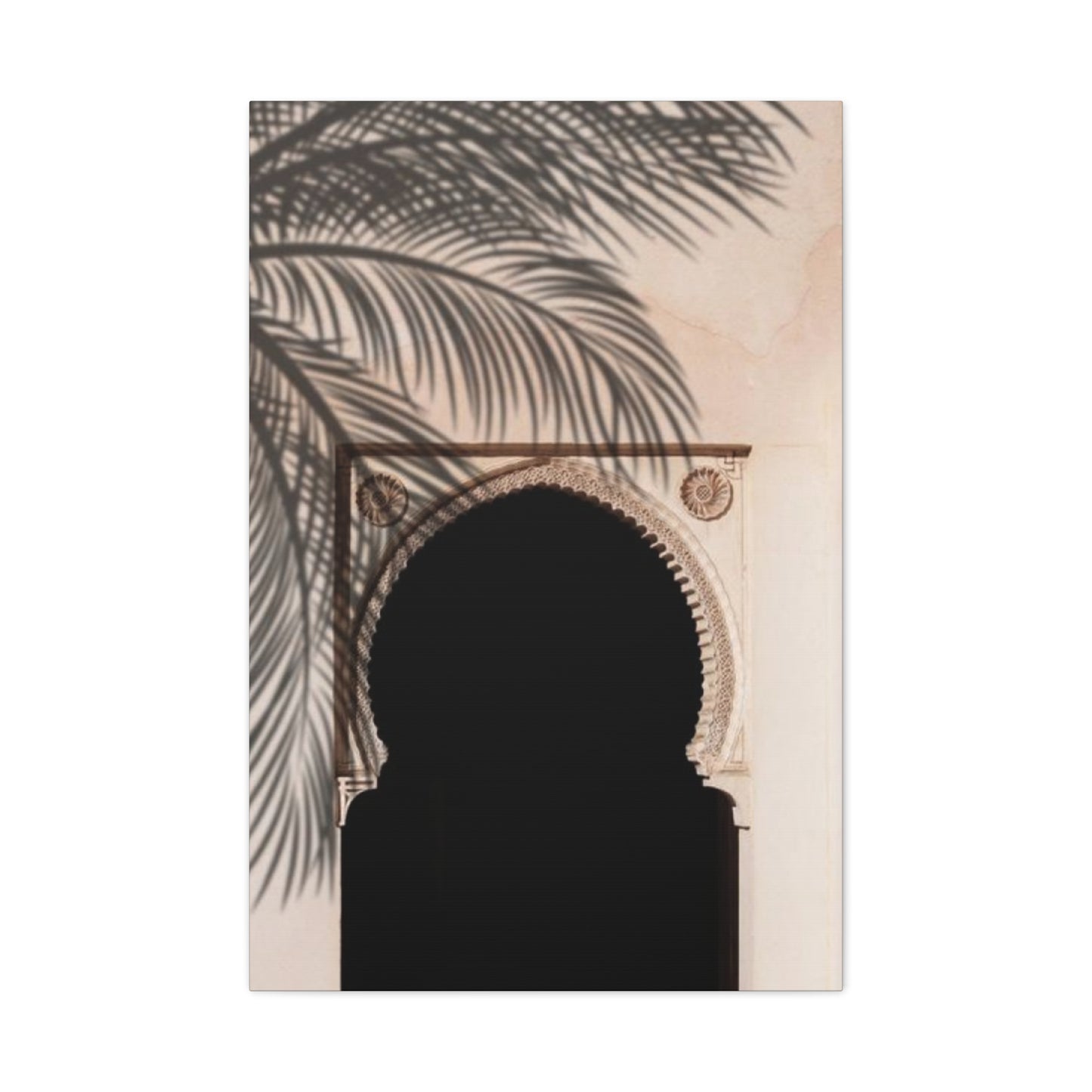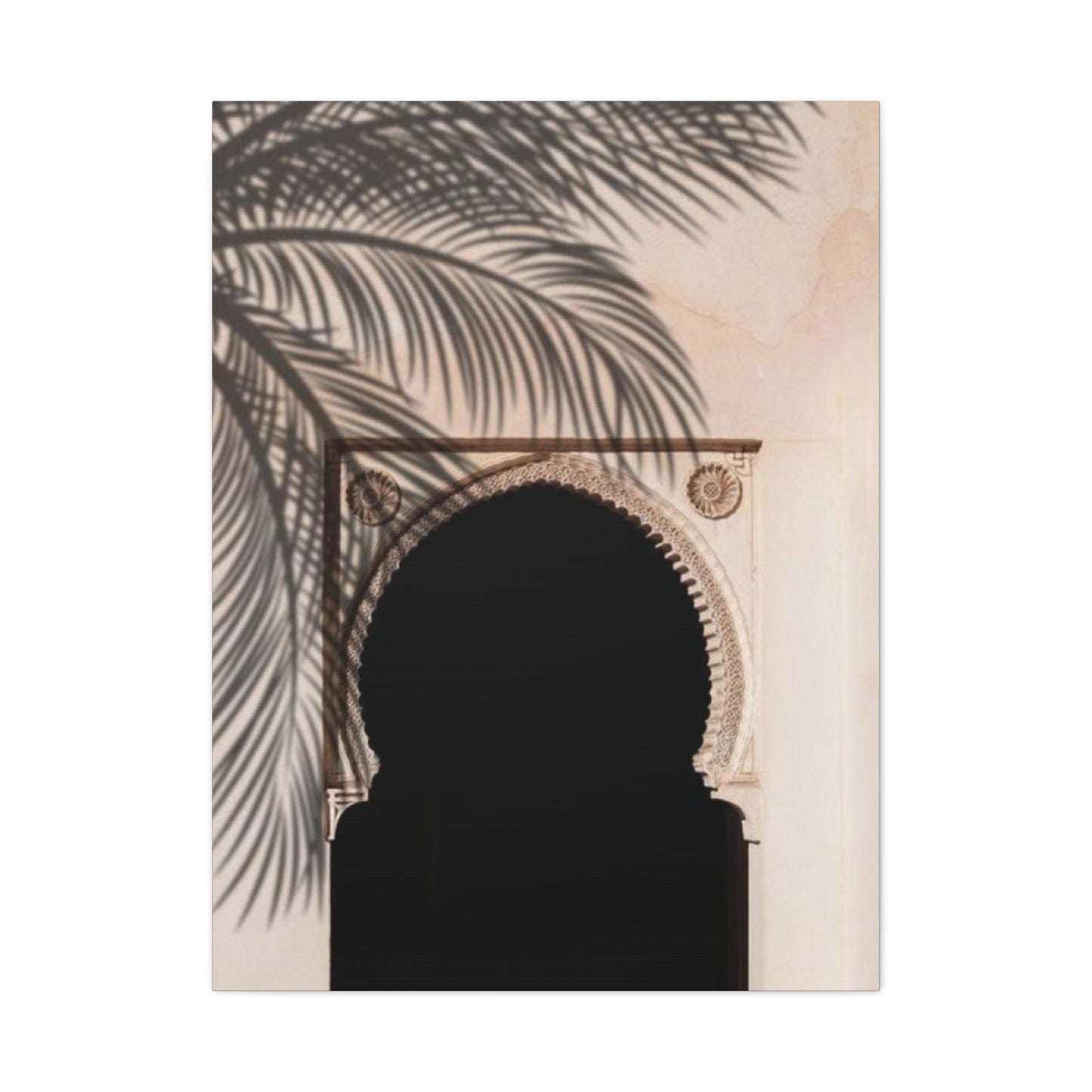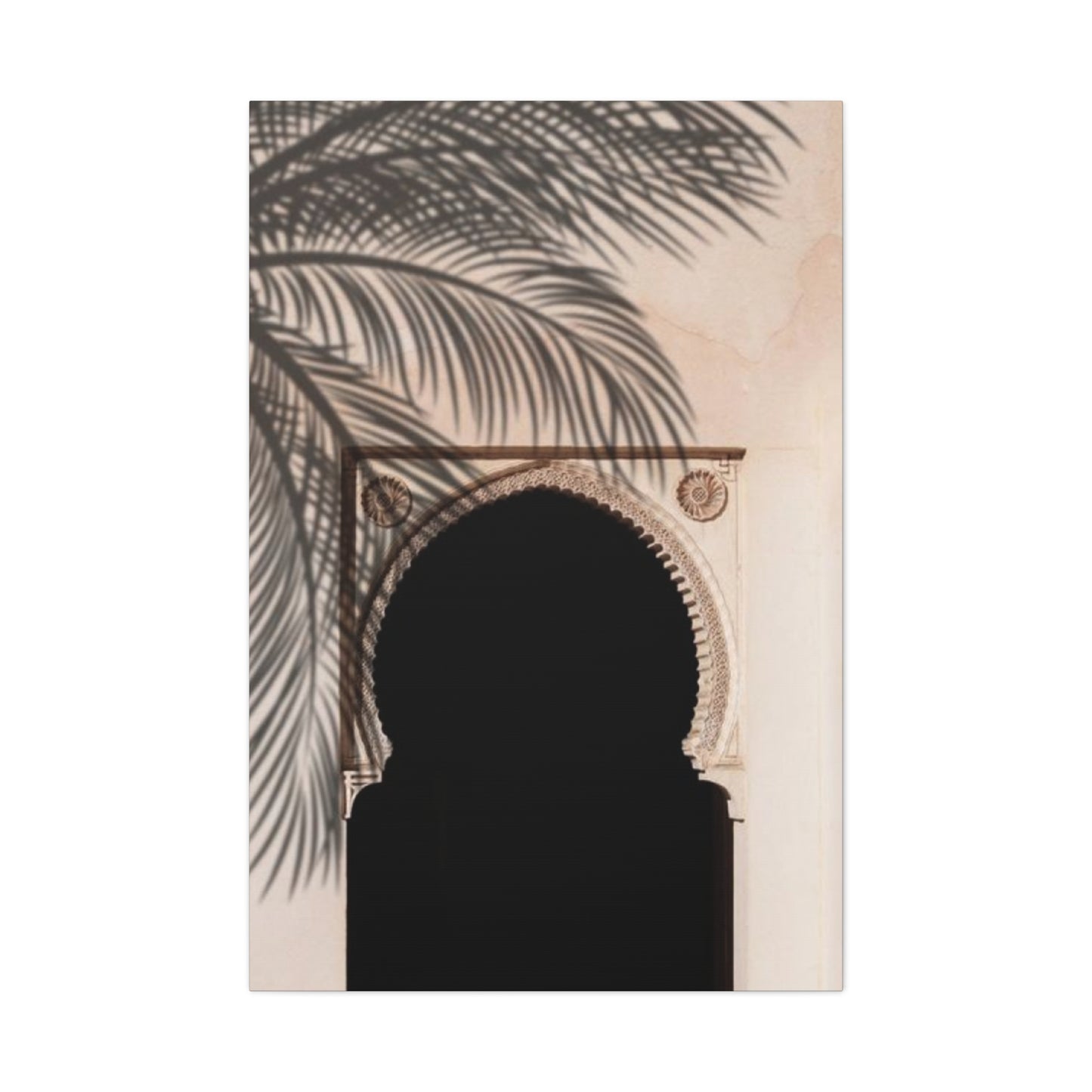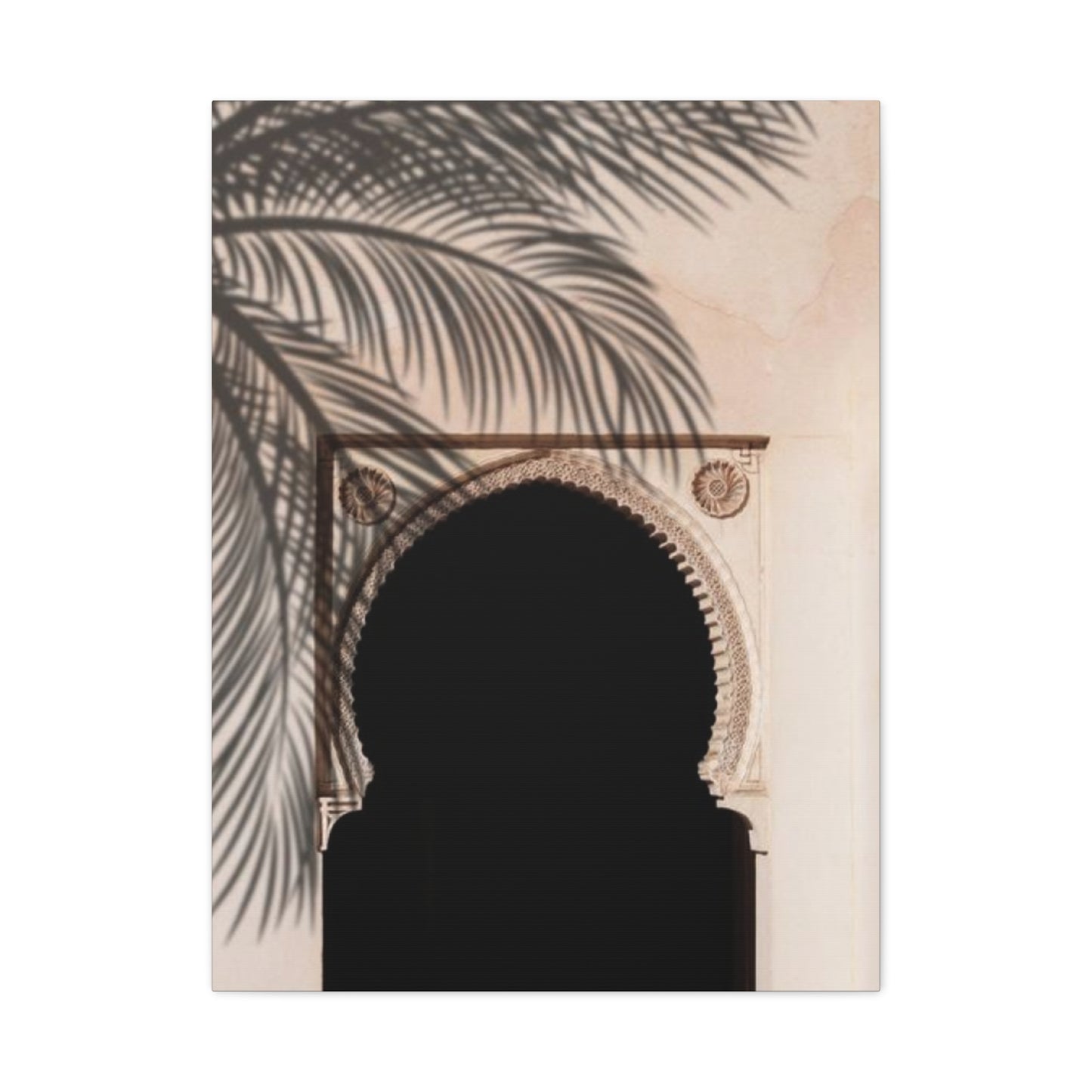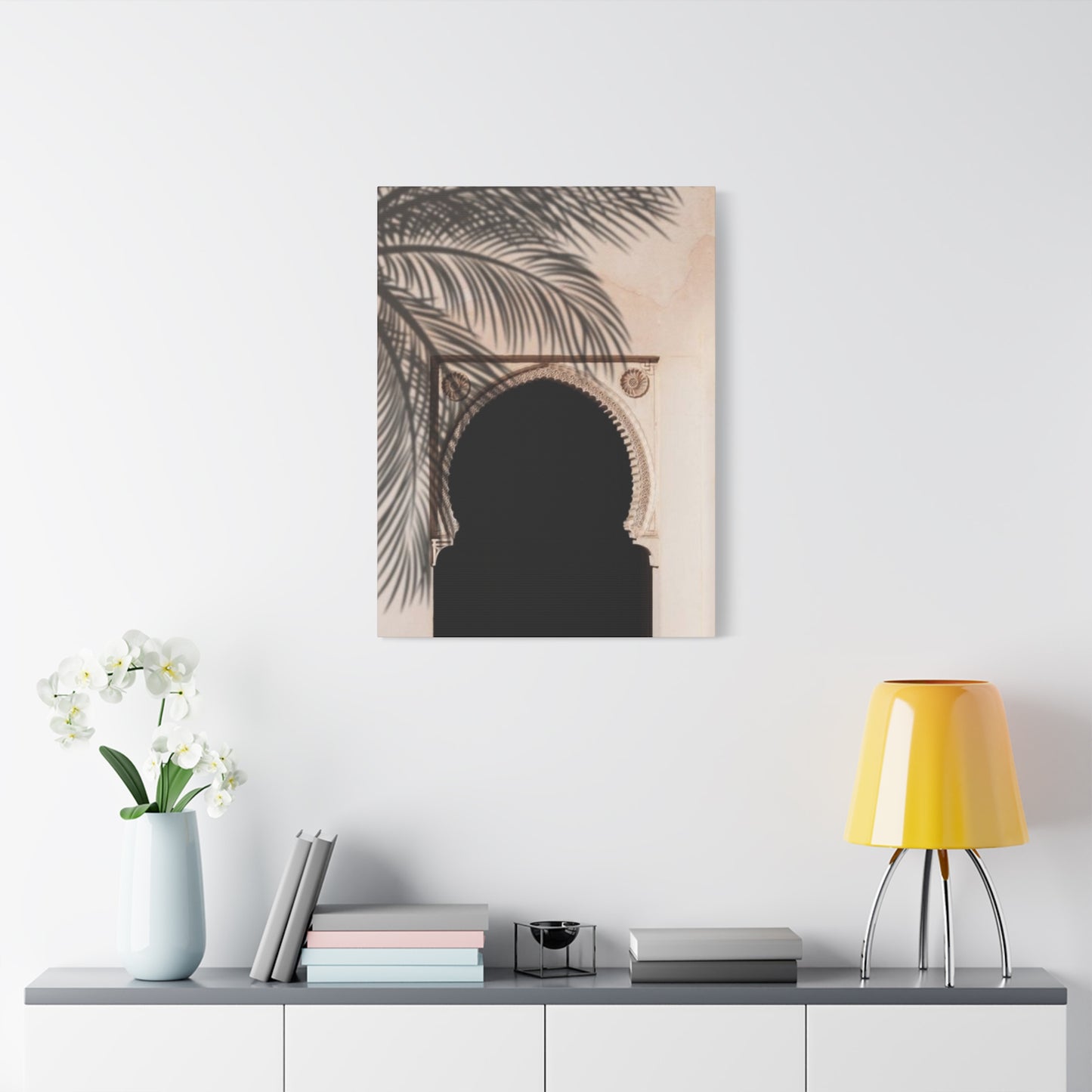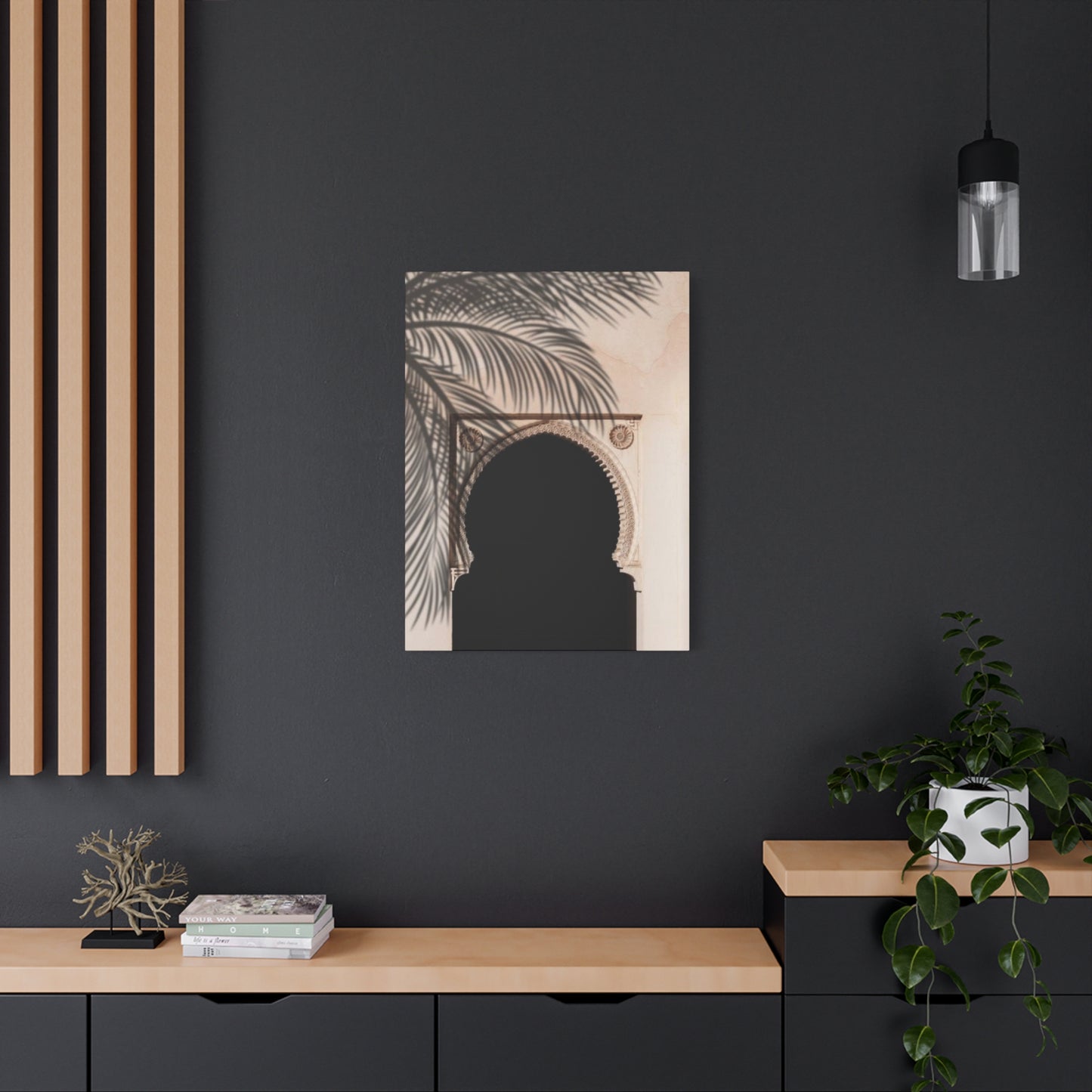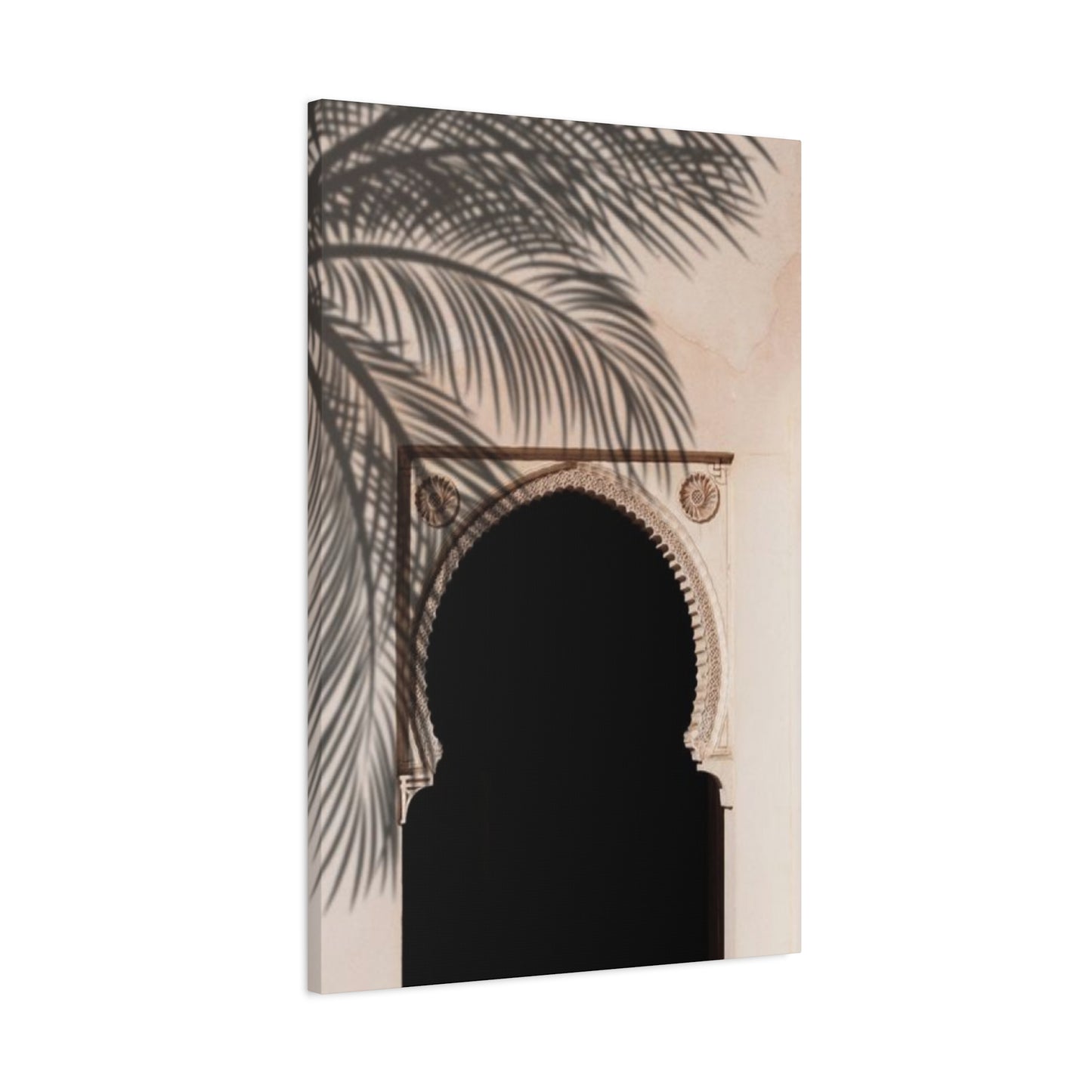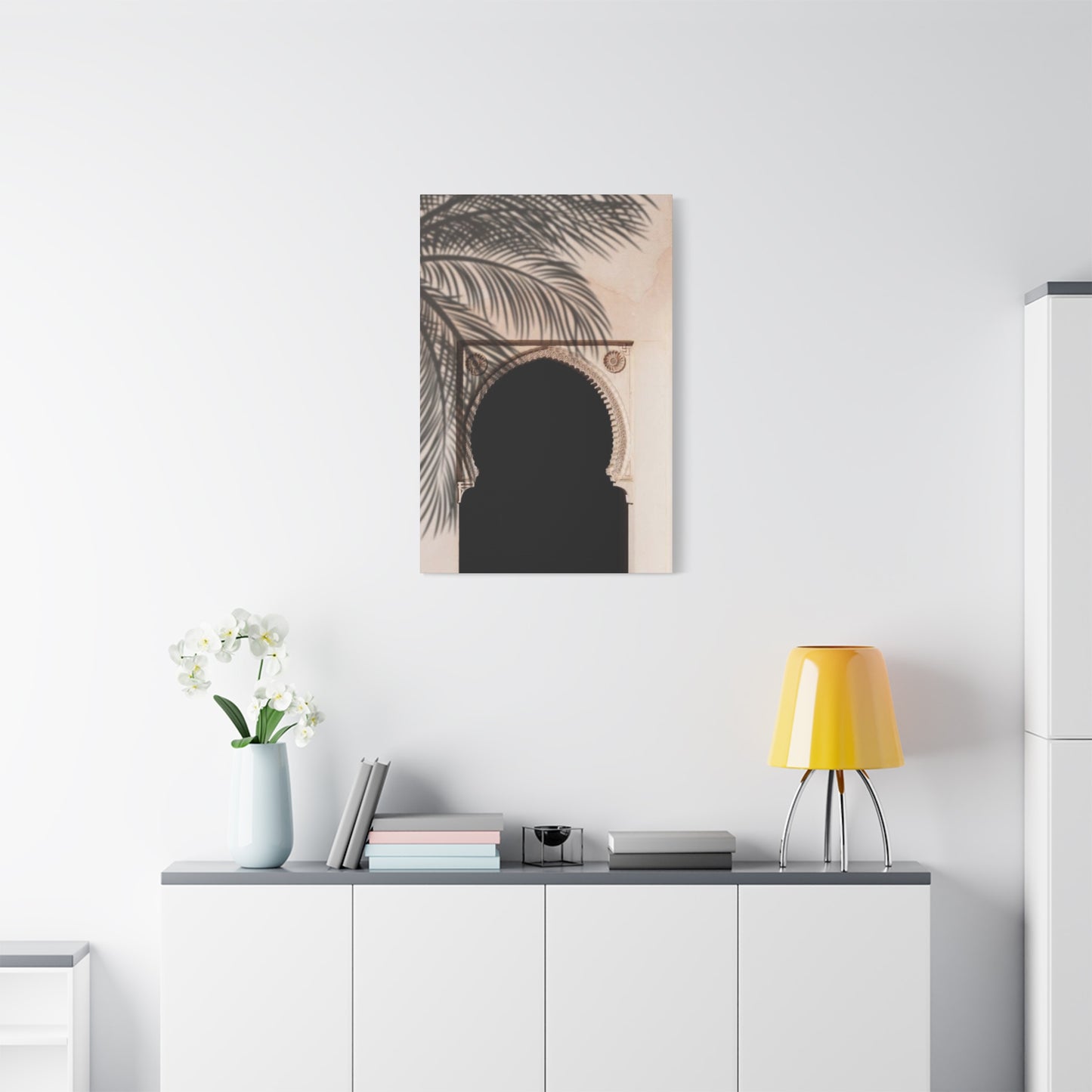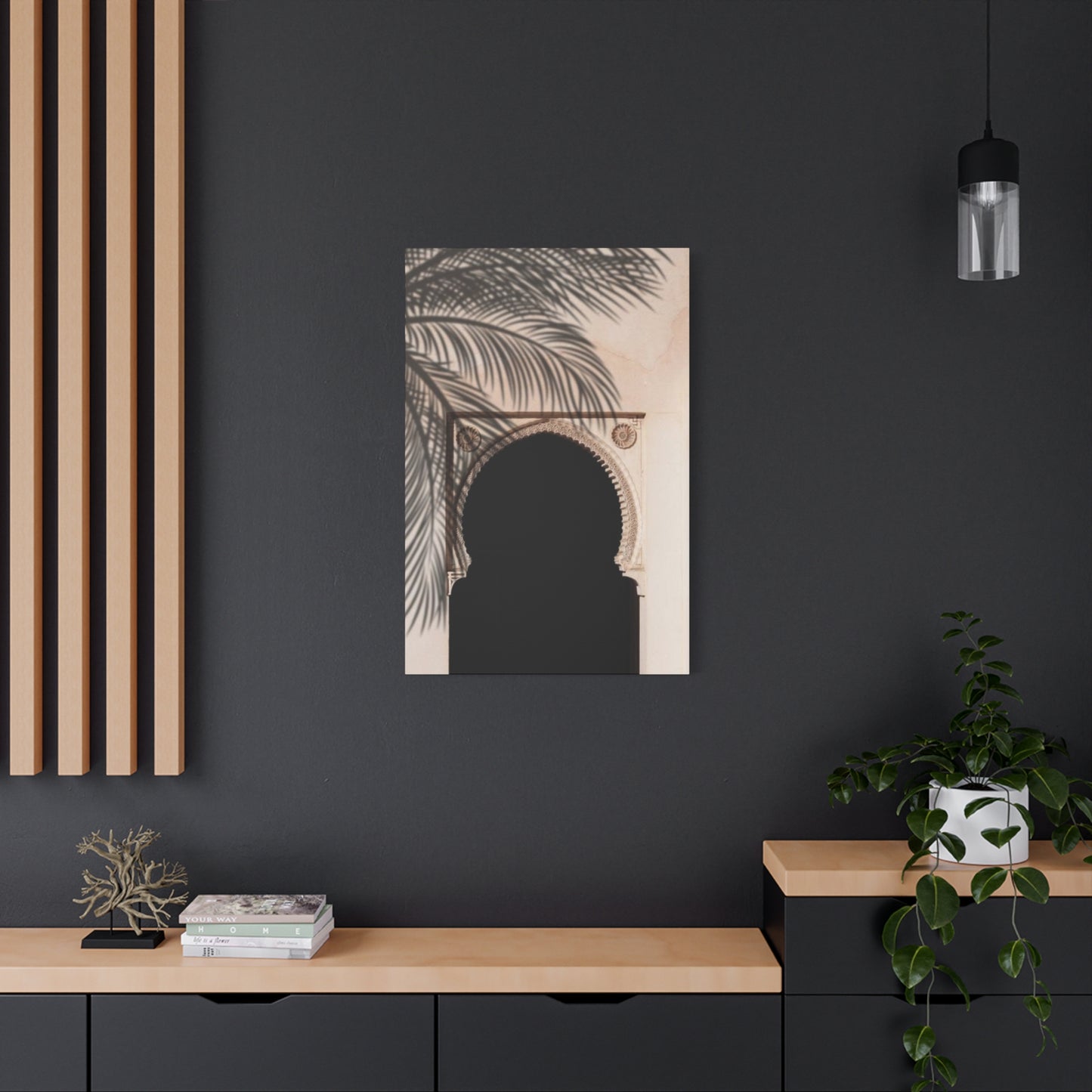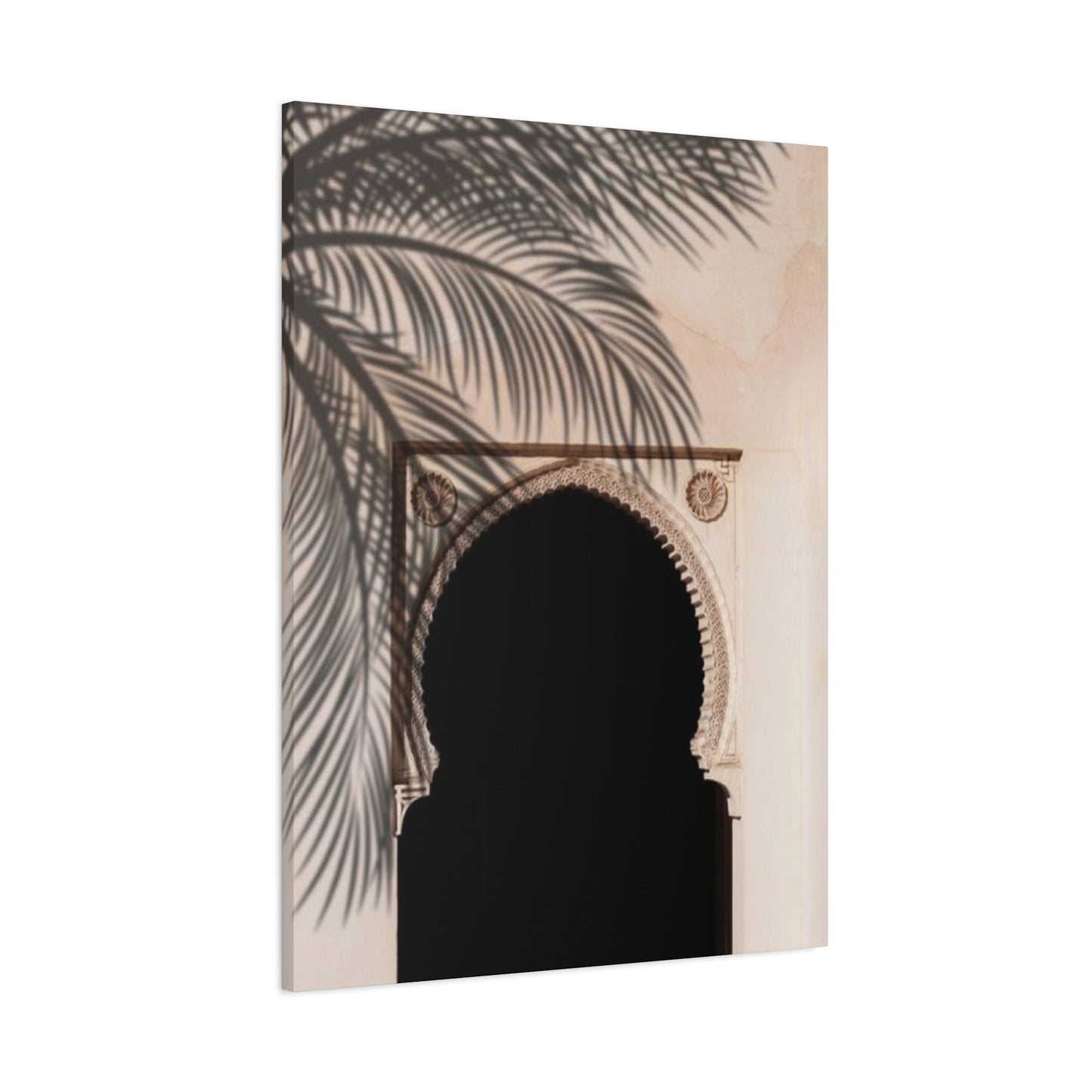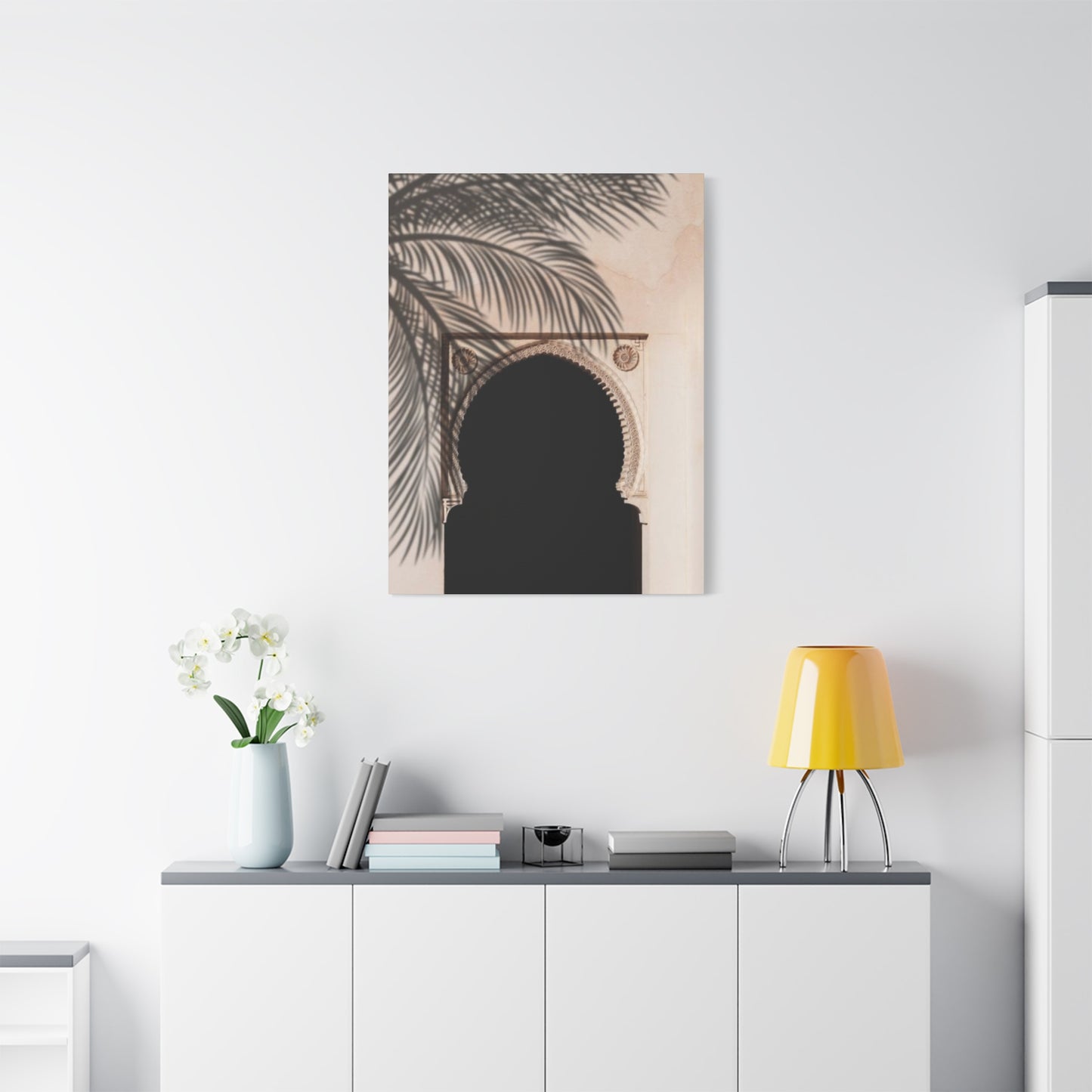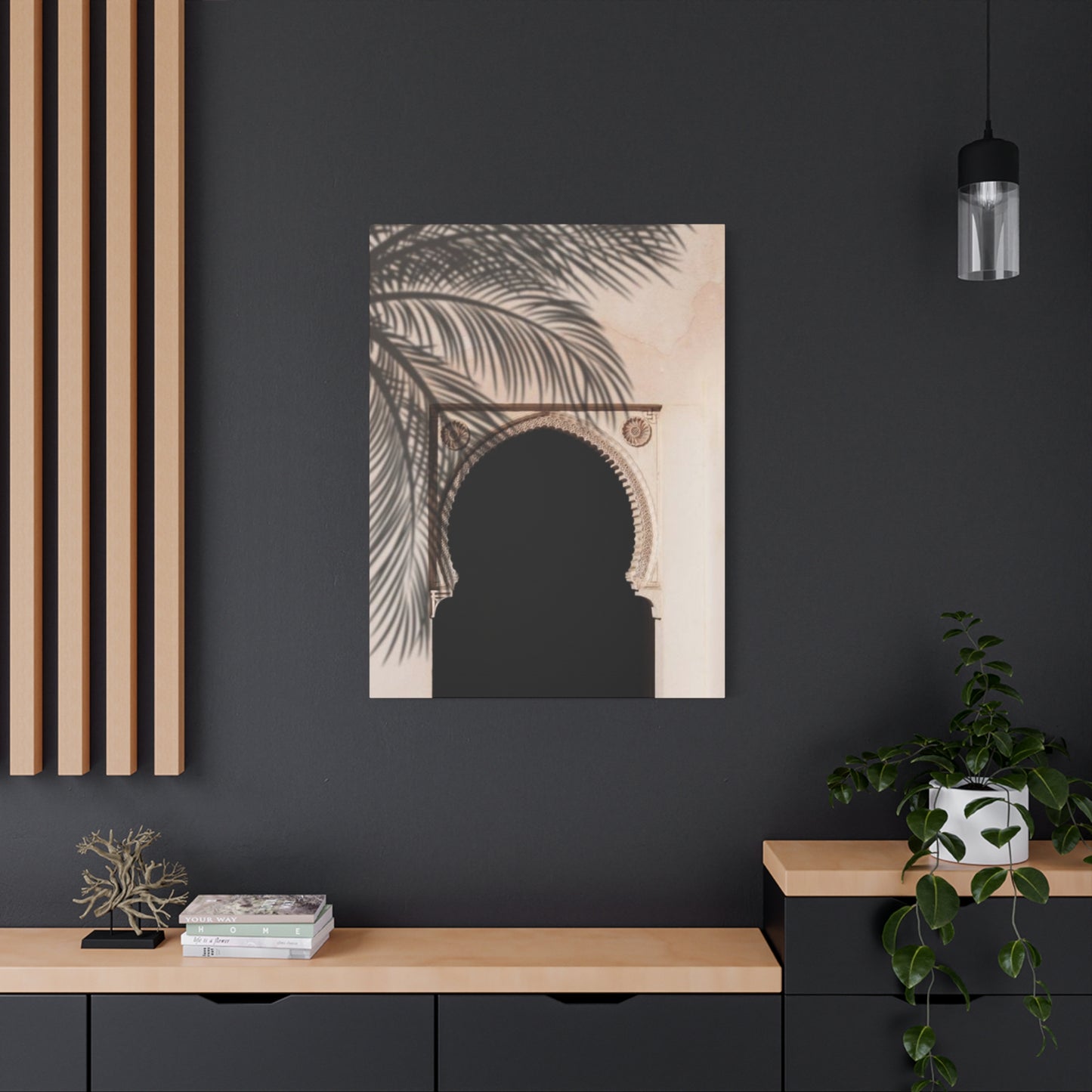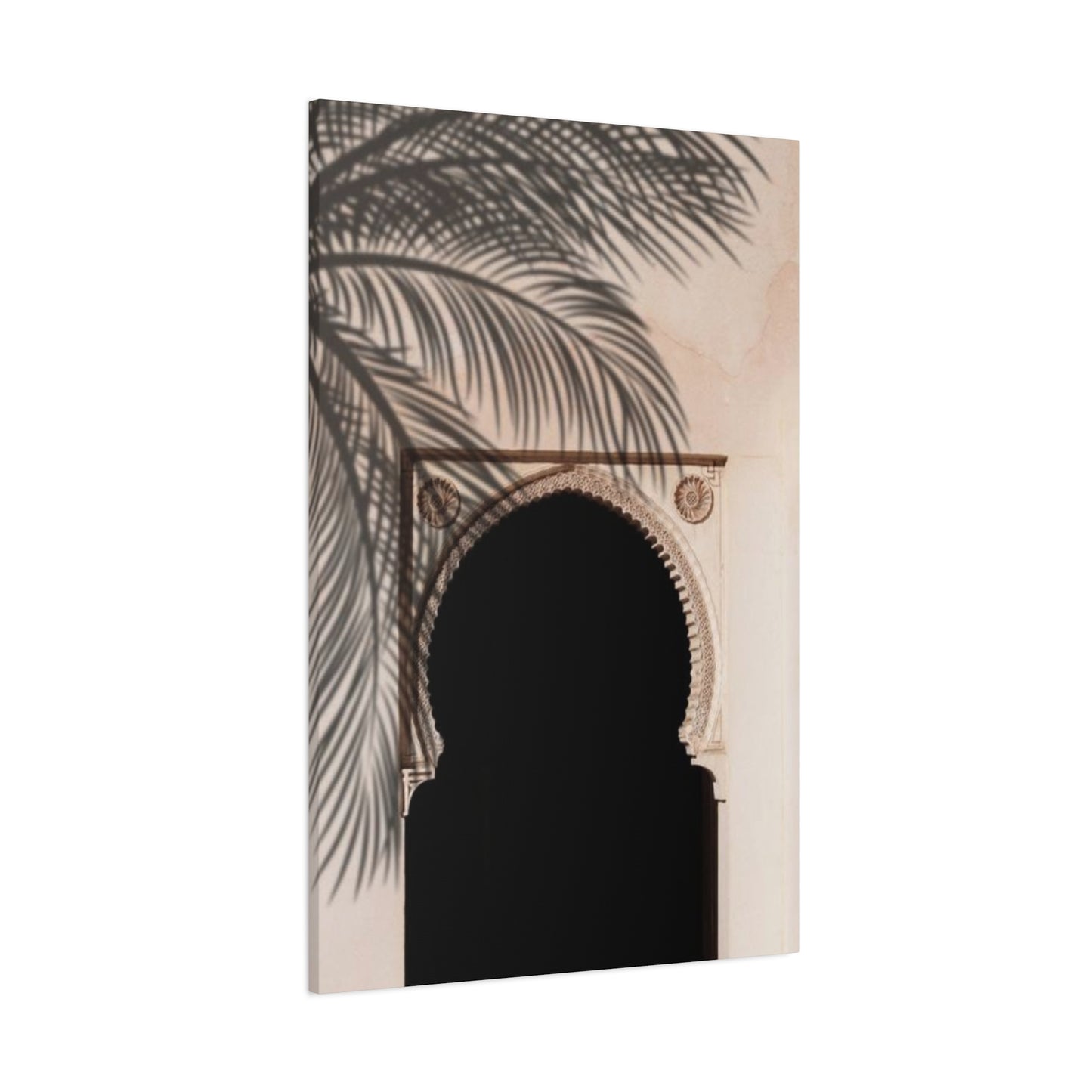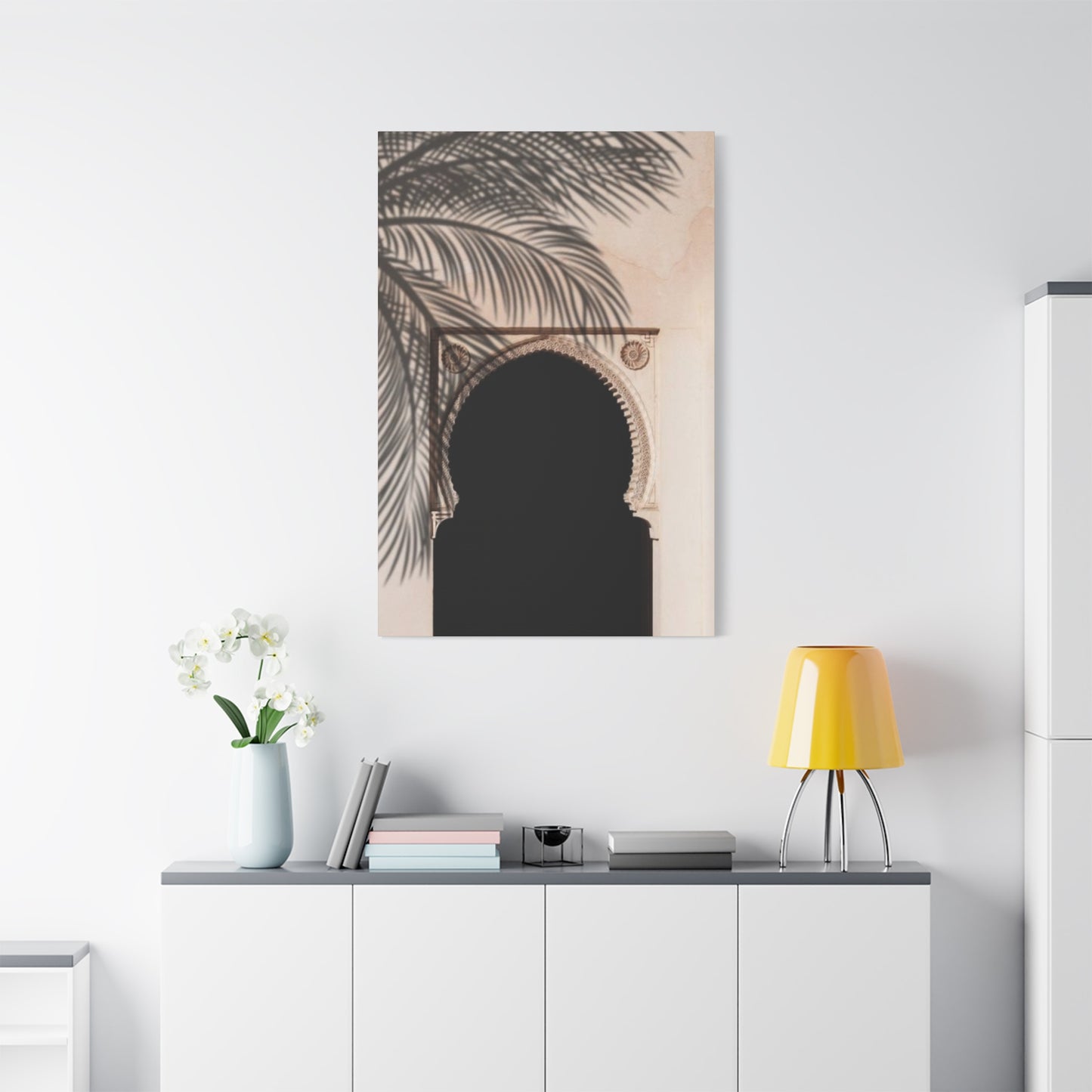Moroccan Door Pattern Wall Art: Fusing Tradition with Modern Aesthetics
Architectural elements serve as the foundation for creating visually stunning buildings that capture attention and express cultural identity. Among these elements, door patterns and wall art stand out as powerful design tools that can transform ordinary entrances into extraordinary focal points. The intricate relationship between door patterns and surrounding architectural features creates a harmonious blend that defines the character of any structure.
Door patterns have evolved significantly throughout history, reflecting changing aesthetic preferences, technological advancements, and cultural influences. These decorative elements not only enhance the visual appeal of entrances but also serve practical purposes in terms of functionality and durability. When combined with complementary wall art, door patterns create a cohesive design narrative that speaks to the building's purpose and the designer's vision.
The significance of door patterns extends beyond mere decoration, encompassing aspects of security, weather resistance, and structural integrity. Modern architects and designers increasingly recognize the importance of integrating these elements seamlessly with surrounding architectural features, creating unified compositions that enhance the overall building aesthetic. This comprehensive exploration examines various aspects of door patterns and their relationship with wall art in contemporary architectural design.
Geometric Designs in Door Architecture
Geometric patterns represent one of the most enduring and versatile approaches to door design, offering endless possibilities for creative expression while maintaining structural integrity. These patterns draw from mathematical principles and natural forms, creating visually striking compositions that can range from simple repetitive motifs to complex interwoven designs. The beauty of geometric door patterns lies in their ability to create order and rhythm while adding visual interest to what might otherwise be a plain entrance.
Contemporary architects embrace geometric patterns for their versatility and timeless appeal. Square, rectangular, and circular motifs can be arranged in countless configurations, each creating a unique visual impact. These patterns work exceptionally well with modern building materials such as steel, glass, and composite materials, allowing designers to achieve precise geometric forms that would have been difficult to create with traditional materials.
The psychological impact of geometric door patterns cannot be overlooked. Clean lines and symmetrical arrangements create a sense of order and stability, while more complex geometric compositions can evoke feelings of sophistication and innovation. This psychological dimension makes geometric patterns particularly suitable for commercial buildings, where the entrance needs to convey professionalism and reliability.
Triangular patterns offer dynamic visual movement, creating the impression of upward momentum that can make a building appear taller and more imposing. These patterns work particularly well in contemporary office buildings and residential complexes where a sense of progress and forward movement is desired. Diamond patterns provide a more refined aesthetic, often associated with luxury and elegance, making them popular choices for high-end residential developments and boutique commercial establishments.
Hexagonal patterns draw inspiration from natural forms, particularly honeycomb structures, creating organic yet ordered compositions that appeal to contemporary environmental consciousness. These patterns can be scaled from small, intricate details to large, bold statements that dominate the entire door surface. The versatility of hexagonal patterns allows them to work equally well in residential and commercial applications.
Circular and curved geometric patterns soften the angular nature of many architectural elements, creating a more welcoming and approachable entrance. These patterns can be combined with straight-line elements to create dynamic compositions that balance formal geometric principles with more organic, flowing forms. This combination often results in doors that feel both contemporary and timeless.
The technical execution of geometric door patterns requires careful consideration of materials, manufacturing processes, and installation techniques. Modern computer-aided design tools enable architects to create precise geometric patterns that can be translated into physical forms using various manufacturing methods. Laser cutting, water jet cutting, and CNC machining allow for the creation of intricate geometric patterns that maintain perfect precision and repeatability.
Color plays a crucial role in geometric door patterns, with different color combinations creating vastly different visual effects. Monochromatic schemes emphasize form and shadow play, while contrasting colors can highlight specific geometric elements and create more dynamic compositions. The relationship between geometric door patterns and surrounding architectural elements, including wall art, must be carefully considered to ensure visual harmony.
Lighting design becomes particularly important when working with geometric door patterns, as the interplay of light and shadow can dramatically enhance or diminish the visual impact of these designs. Strategic lighting placement can emphasize certain geometric elements while creating subtle shadows that add depth and dimensionality to the overall composition.
The maintenance of geometric door patterns varies depending on the materials and finishes used, but generally requires regular cleaning and periodic refinishing to maintain their visual impact. The durability of geometric patterns often exceeds that of more organic or representational designs, making them practical choices for high-traffic entrances and challenging environmental conditions.
Traditional vs Modern Door Patterns
The evolution from traditional to modern door patterns reflects broader changes in architectural philosophy, available materials, and manufacturing capabilities. Traditional door patterns often drew heavily from local cultural motifs, available materials, and hand-crafting techniques that resulted in unique, region-specific designs. These patterns typically featured organic forms, religious symbolism, and decorative elements that told stories about the building's inhabitants or purpose.
Traditional door patterns frequently incorporated natural motifs such as flowers, leaves, vines, and trees, reflecting humanity's connection to the natural world and the agricultural roots of many societies. These patterns were often deeply symbolic, with specific motifs carrying cultural or religious significance that went beyond mere decoration. The craftsmanship required to create traditional door patterns was typically passed down through generations, resulting in regional styles that became identifying characteristics of particular areas or cultures.
Modern door patterns, in contrast, tend to emphasize clean lines, abstract forms, and technological precision. The shift toward modernism in architecture brought with it a preference for patterns that reflected industrial capabilities and contemporary aesthetic sensibilities. Modern patterns often prioritize function alongside form, with designs that consider manufacturing efficiency, material properties, and maintenance requirements as integral parts of the design process.
The materials used in traditional versus modern door patterns represent perhaps the most significant difference between these approaches. Traditional patterns were typically executed in wood, stone, or metal using hand tools and techniques that had remained largely unchanged for centuries. Modern patterns can incorporate a vast array of materials including composite materials, specialty alloys, and synthetic materials that offer properties impossible to achieve with traditional materials.
Manufacturing processes have revolutionized the creation of door patterns, enabling levels of precision and repeatability that were impossible to achieve through traditional handcrafting methods. Computer-controlled machinery can create intricate patterns that maintain perfect consistency across multiple units, while traditional methods resulted in subtle variations that, while charming, could also present challenges in terms of quality control and maintenance.
The design philosophy behind traditional and modern door patterns reflects different approaches to the relationship between buildings and their inhabitants. Traditional patterns often sought to create a sense of warmth, welcome, and connection to cultural heritage, while modern patterns may prioritize efficiency, security, and alignment with contemporary aesthetic values. Neither approach is inherently superior, and many successful contemporary designs successfully blend elements from both traditions.
Contemporary architects increasingly recognize the value of both traditional and modern approaches, leading to hybrid designs that incorporate traditional motifs executed using modern materials and techniques. This synthesis allows designers to create door patterns that honor cultural heritage while meeting contemporary performance requirements. Such approaches often result in designs that feel both familiar and fresh, appealing to diverse audiences.
The cost considerations for traditional versus modern door patterns vary significantly depending on the specific approach taken. Traditional handcrafted patterns may require significant labor investment but can often utilize locally available materials, while modern patterns may require specialized equipment or materials but can benefit from economies of scale in manufacturing. The long-term maintenance requirements also differ, with traditional patterns often requiring specialized restoration skills that may be increasingly difficult to source.
Environmental considerations play an increasingly important role in choosing between traditional and modern door pattern approaches. Traditional patterns often utilize locally sourced, renewable materials and time-tested techniques that may have lower environmental impact, while modern patterns may incorporate recycled materials and manufacturing processes designed for efficiency and minimal waste. The longevity and maintenance requirements of different approaches also factor into their overall environmental impact.
The integration of traditional and modern door patterns with wall art and other architectural elements requires careful consideration of the overall design context. Traditional patterns may work best with complementary traditional architectural elements, while modern patterns may require contemporary architectural contexts to achieve their full impact. However, skillful designers can create successful combinations that bridge different aesthetic traditions.
Market preferences for traditional versus modern door patterns vary significantly by region, building type, and target demographic. Residential projects may lean toward traditional patterns that create a sense of home and belonging, while commercial projects may favor modern patterns that convey professionalism and innovation. Understanding these preferences is crucial for architects and designers working in different markets and contexts.
The Role of Symmetry in Door Patterns
Symmetry plays a fundamental role in door pattern design, serving as both an organizing principle and an aesthetic device that creates visual harmony and psychological comfort. The human brain is naturally drawn to symmetrical compositions, finding them pleasing and reassuring in ways that often operate below the level of conscious awareness. This inherent preference for symmetry makes it a powerful tool for architects and designers seeking to create entrances that feel welcoming and aesthetically satisfying.
Bilateral symmetry, where patterns are mirrored across a central vertical axis, represents the most common approach to door pattern symmetry. This type of symmetry creates a sense of balance and stability that works well for both residential and commercial applications. The central axis becomes a focal point that draws the eye and creates a clear hierarchy within the composition, making the entrance feel intentional and well-designed.
Radial symmetry, where patterns emanate from a central point, can create dramatic focal effects that make doors appear more prominent and important. This approach works particularly well for circular or arched doors, where the radial pattern can follow and emphasize the architectural form. Radial symmetry often creates a sense of movement and energy that can make static architectural elements feel more dynamic and engaging.
Rotational symmetry, where patterns repeat at regular intervals around a central point, offers opportunities for creating complex compositions that maintain visual coherence despite their intricacy. This type of symmetry can be particularly effective in creating patterns that work at multiple viewing distances, with different levels of detail becoming apparent as viewers approach the door. The mathematical precision of rotational symmetry often appeals to contemporary aesthetic sensibilities.
Translational symmetry, where patterns repeat along one or more axes, can create rhythm and movement across the door surface. This approach works well for doors that are part of larger architectural compositions, where the door pattern needs to relate to surrounding elements while maintaining its own identity. Translational symmetry can help create visual connections between the door and other architectural features.
The scale of symmetrical elements within door patterns significantly affects their visual impact and psychological effect. Large-scale symmetrical elements create bold, dramatic statements that can be perceived from a distance, while small-scale symmetrical elements create intricate, detailed compositions that reward close examination. The choice of scale should consider the viewing context and the relationship between the door and surrounding architectural elements.
Breaking symmetry intentionally can create powerful visual effects that draw attention and create memorable impressions. Slight asymmetries within otherwise symmetrical compositions can create tension and interest that makes the design more engaging. However, such departures from symmetry must be handled skillfully to avoid creating compositions that feel unresolved or unintentional.
The relationship between door pattern symmetry and the symmetry of surrounding architectural elements requires careful coordination to achieve visual harmony. Doors that are part of symmetrical building facades may need to maintain strong internal symmetry to support the overall architectural composition, while doors in asymmetrical contexts may have more freedom to explore asymmetrical pattern approaches.
Color and material choices can either emphasize or de-emphasize symmetrical relationships within door patterns. Monochromatic color schemes tend to emphasize form and symmetry, while contrasting colors can be used to highlight specific symmetrical elements or create visual rhythms that support the overall composition. Material choices that create texture variations can add depth to symmetrical patterns without disrupting their fundamental balance.
Lighting plays a crucial role in revealing and enhancing symmetrical door patterns. Strategic lighting placement can create shadow patterns that emphasize symmetrical relationships, while poor lighting choices can obscure symmetrical elements or create confusing visual effects. The interplay between light, shadow, and symmetrical patterns often creates the most compelling visual experiences.
Manufacturing and installation considerations become particularly important when working with symmetrical door patterns. Achieving perfect symmetry requires precise manufacturing processes and careful installation techniques that ensure proper alignment and positioning. Quality control becomes critical, as small deviations from symmetry are often more noticeable than similar variations in asymmetrical compositions.
The maintenance of symmetrical door patterns requires attention to preserving the visual relationships that make the symmetry effective. Uneven wear, differential weathering, or partial damage can disrupt symmetrical relationships and diminish the overall visual impact of the design. Maintenance procedures should be designed to preserve symmetrical relationships while addressing practical needs for cleaning and repair.
Cultural attitudes toward symmetry vary significantly across different regions and architectural traditions. Some cultures place high value on perfect symmetry as a reflection of order and harmony, while others may prefer more organic, asymmetrical approaches that reflect natural forms. Understanding these cultural preferences is important when designing door patterns for international projects or diverse communities.
Intricate Carvings and Patterns on Doors
Intricate carvings and patterns on doors represent one of the highest forms of architectural craftsmanship, combining artistic expression with functional design to create entrances that serve as focal points and statements of cultural identity. These detailed decorative elements transform simple doorways into complex visual narratives that can tell stories, convey status, or express religious and cultural beliefs. The tradition of carved door patterns spans millennia and continues to evolve with contemporary materials and techniques.
The artistry involved in creating intricate door carvings requires exceptional skill and patience, with master craftsmen spending years perfecting their techniques and developing their personal artistic styles. Traditional carving methods rely on hand tools and techniques that have been refined over generations, resulting in unique pieces that bear the individual marks of their creators. Each carved element requires careful planning and execution, with mistakes often impossible to correct without starting over entirely.
Wood remains the preferred medium for many intricate door carvings due to its workability and natural beauty. Different wood species offer varying characteristics that affect both the carving process and the final appearance. Hardwoods such as oak, mahogany, and teak provide durability and fine detail capability, while softer woods like pine and cedar are easier to work but may lack the longevity required for exterior applications. The choice of wood species significantly impacts both the carving process and the long-term performance of the finished door.
Relief carving techniques create dimensional effects that add depth and visual interest to door surfaces. Low relief carvings create subtle dimensional variations that become apparent through shadow play and tactile examination, while high relief carvings create dramatic three-dimensional effects that can be perceived from a considerable distance. The choice between relief levels depends on the overall design intent, viewing context, and practical considerations such as weather resistance and maintenance requirements.
Pierced carving techniques create openwork patterns that allow light and air to pass through while maintaining structural integrity. These techniques are particularly popular in warm climates where ventilation is important, and they can create stunning visual effects when backlit or when they cast shadow patterns on interior surfaces. The structural considerations for pierced carvings are more complex than solid carvings, requiring careful attention to maintaining adequate strength while achieving the desired aesthetic effects.
Modern technology has expanded the possibilities for intricate door patterns through computer-controlled carving equipment and advanced design software. CNC routers and laser engravers can create precise, repeatable patterns that would be extremely time-consuming to execute by hand. However, many designers and clients still prefer handcrafted elements for their unique character and the connection to traditional craftsmanship traditions that they represent.
The integration of carved patterns with other door elements such as hardware, glass panels, and metal accents requires careful coordination to achieve visual harmony. Hardware placement must be planned during the design phase to ensure that it complements rather than conflicts with carved elements. Glass panels can provide opportunities for backlighting carved elements or creating interesting visual relationships between transparent and opaque areas.
Finishing techniques play a crucial role in protecting and enhancing intricate door carvings. Traditional finishes such as oil and wax provide natural-looking protection while allowing the wood grain and carving details to show through clearly. Modern synthetic finishes may offer superior protection but can sometimes create artificial-looking surfaces that detract from the handcrafted quality of carved elements. The choice of finish must balance protection, appearance, and maintenance requirements.
Maintenance of intricately carved doors requires specialized knowledge and techniques to preserve both the structural integrity and aesthetic quality of the carvings. Dust and debris can accumulate in carved recesses, requiring careful cleaning techniques that don't damage delicate details. Refinishing carved doors requires skilled craftspeople who understand how to work with complex three-dimensional surfaces without obliterating fine details.
The cost of intricately carved doors reflects the significant labor investment required for their creation. Hand-carved doors represent substantial investments that may be justified by their artistic value, durability, and ability to serve as signature architectural elements. Machine-carved doors can offer similar visual effects at lower costs, but may lack the subtle variations and unique character of handcrafted pieces.
Cultural and religious symbolism often plays important roles in intricate door carving designs. Many traditional carving motifs carry specific meanings related to protection, prosperity, spirituality, or cultural identity. Contemporary designers working with traditional carving motifs must understand these symbolic meanings to ensure appropriate and respectful use of culturally significant patterns and symbols.
The relationship between intricate door carvings and surrounding wall art requires careful consideration to avoid visual competition or confusion. Heavily carved doors may work best with simpler wall treatments that allow the door to serve as the primary focal point, while simpler doors may benefit from more elaborate wall art that creates visual interest in the surrounding area. The key is achieving appropriate balance and hierarchy within the overall composition.
Weather protection becomes particularly critical for intricately carved exterior doors, as the dimensional variations created by carving can trap moisture and debris that accelerate deterioration. Proper design of overhangs, drainage details, and ventilation can help protect carved elements while maintaining their visual accessibility. In harsh climates, intricate carvings may be better suited to interior applications or protected exterior locations.
Documentation and preservation of intricate door carving techniques and designs help ensure the continuation of these traditional crafts. Many carving traditions are passed down through apprenticeship systems that may be vulnerable to disruption by changing economic conditions or cultural preferences. Recording techniques, patterns, and symbolic meanings helps preserve this knowledge for future generations and supports the continued evolution of these artistic traditions.
Using Door Patterns to Enhance Building Facades
Door patterns serve as crucial elements in facade composition, capable of transforming the entire character and visual impact of a building's exterior. The strategic use of door patterns can create focal points, establish rhythm and proportion, and contribute to the overall architectural narrative that defines a building's identity. When skillfully integrated with other facade elements, door patterns can elevate ordinary buildings to exceptional architectural statements that capture attention and create lasting impressions.
The scale relationship between door patterns and building facades requires careful consideration to achieve appropriate visual balance. Large buildings may require bold, oversized door patterns to maintain visual proportion and prevent the entrance from appearing insignificant within the overall composition. Conversely, smaller buildings may benefit from more intricate, detailed patterns that create interest without overwhelming the facade. The viewing distance and approach sequence also influence appropriate pattern scale choices.
Color relationships between door patterns and facade materials can create various visual effects ranging from subtle integration to bold contrast. Doors that blend harmoniously with facade colors create unified compositions that emphasize overall building form, while contrasting door colors can create dramatic focal points that announce entrances clearly. The choice between integration and contrast depends on the desired emphasis and the building's functional requirements.
Rhythm and repetition in door pattern design can be used to create visual connections across building facades, particularly in multi-unit residential or commercial developments. Repeating pattern elements can unify separate entrances while maintaining individual identity for each unit. Variations within repeated patterns prevent monotony while maintaining overall coherence. The challenge lies in achieving enough similarity to create unity without creating boring uniformity.
The relationship between door patterns and window patterns within facade compositions requires coordination to avoid visual conflicts or confusion. Doors and windows can share common pattern elements, materials, or proportional relationships that create visual harmony across the facade. Alternatively, doors can be treated as distinct elements that contrast with window treatments to create clear hierarchy and emphasis. The key is establishing clear design intent and executing it consistently.
Material selections for door patterns must consider their relationship to facade materials in terms of compatibility, maintenance requirements, and weather resistance. Doors that use similar materials to the facade may integrate more successfully but may also disappear visually if not handled skillfully. Contrasting materials can create visual interest and emphasis but must be selected to ensure long-term compatibility and appropriate weathering characteristics.
Lighting design for patterned doors within facade compositions can dramatically enhance their visual impact and extend their effectiveness into evening hours. Integrated lighting systems can highlight pattern details, create dramatic shadow effects, or provide necessary illumination for safety and security. The lighting design must consider both the door itself and its relationship to facade lighting to create coordinated compositions that work effectively at all hours.
Proportion and scale relationships between door patterns and facade elements such as columns, pilasters, cornices, and other architectural features require careful coordination to achieve visual harmony. Door patterns can echo proportional relationships found elsewhere in the facade, creating visual connections that unify the overall composition. Understanding classical proportional systems and contemporary design principles helps architects create facades with appropriate relationships between all elements.
The role of door patterns in establishing building identity and wayfinding cannot be overlooked, particularly in large commercial or institutional complexes. Distinctive door patterns can help identify specific entrances, departments, or functions while contributing to overall building character. The patterns must be distinctive enough to serve their identification function while remaining integrated within the overall facade design.
Maintenance accessibility for patterned doors within facade compositions requires consideration during the design phase to ensure long-term performance and appearance. Doors located high above grade or in difficult-to-reach locations may require pattern designs that minimize maintenance requirements or facilitate access for necessary care. The choice of materials and finishes should reflect realistic maintenance capabilities and schedules.
Climate considerations significantly impact the performance and appearance of door patterns within facade compositions. Patterns that work well in temperate climates may not be suitable for extreme heat, cold, humidity, or precipitation levels. Understanding local climate conditions and their impact on different materials and pattern types is essential for creating door patterns that maintain their visual impact over time.
Building codes and accessibility requirements may impose constraints on door pattern designs, particularly regarding clear opening widths, hardware placement, and operational forces. These requirements must be integrated into the pattern design process from the beginning to ensure compliance without compromising design intent. Creative solutions often emerge from the challenge of meeting regulatory requirements while maintaining design excellence.
The economic impact of door pattern choices on overall facade costs should be considered during the design development process. Highly detailed or custom patterns may represent significant budget items that must be balanced against other facade elements. Value engineering exercises may require simplification or modification of door patterns while maintaining their essential design contribution to the facade composition.
Renovation and adaptive reuse projects present unique challenges and opportunities for door pattern design within existing facades. New door patterns must relate appropriately to existing architectural elements while meeting contemporary functional requirements. Historic buildings may require careful research and documentation to ensure that new door patterns are appropriate to the building's architectural character and period.
Materials That Highlight Door Pattern Details
The selection of materials for door patterns profoundly impacts their visual effectiveness, durability, and maintenance requirements. Different materials offer unique characteristics in terms of workability, weather resistance, cost, and aesthetic qualities that must be carefully evaluated during the design process. The relationship between material properties and pattern designs often determines the success of the final installation and its long-term performance within the architectural context.
Wood remains one of the most popular materials for door patterns due to its natural beauty, workability, and traditional associations. Different wood species offer varying characteristics that affect both the pattern creation process and the final appearance. Dense hardwoods such as mahogany, teak, and oak provide excellent durability and fine detail capability, making them suitable for intricate patterns that require precise execution. The natural grain patterns in wood can either complement or compete with applied patterns, requiring careful consideration of grain orientation and pattern placement.
Softwood species like pine, fir, and cedar offer different advantages including easier workability, lower cost, and often superior dimensional stability. However, softwoods may not provide the durability required for exterior applications or high-traffic installations. The choice between hardwood and softwood often depends on the specific application, budget constraints, and performance requirements. Engineered wood products can offer improved dimensional stability and consistent properties while maintaining natural wood appearance.
Metal materials provide opportunities for creating patterns with different aesthetic qualities and performance characteristics. Steel offers exceptional strength and durability, making it suitable for large-scale patterns and high-security applications. The ability to weld, bend, and machine steel allows for complex pattern geometries that would be difficult to achieve in other materials. However, steel requires appropriate finishing to prevent corrosion and maintain appearance over time.
Aluminum provides many of the benefits of steel while offering superior corrosion resistance and lighter weight. The ability to extrude aluminum into complex cross-sections creates opportunities for integral pattern elements that are formed during the manufacturing process rather than applied afterward. Aluminum's excellent machinability allows for precise pattern execution using modern CNC equipment. The material's natural oxide layer provides some weather resistance, but decorative finishes are often applied for enhanced appearance and protection.
Bronze and other copper alloys offer unique aesthetic qualities including natural patina development over time. These materials are often chosen for their association with quality and permanence, making them popular for institutional and high-end residential applications. The patina development process can be controlled through surface treatments and environmental factors, allowing designers to predict and influence long-term appearance changes. However, copper alloys are generally more expensive than steel or aluminum and require specialized fabrication techniques.
Composite materials increasingly offer opportunities for creating door patterns that combine the best characteristics of different material types. Fiber-reinforced plastics can be molded into complex pattern geometries while offering excellent weather resistance and low maintenance requirements. These materials can be formulated to mimic natural materials like wood or stone while providing superior performance characteristics. However, composite materials may lack the authentic character and aging characteristics of natural materials.
Glass materials enable pattern creation through techniques such as etching, sandblasting, acid washing, and embedded elements. These techniques can create patterns that interact with light in unique ways, creating changing appearances throughout the day as lighting conditions vary. Laminated glass systems can incorporate pattern elements between glass layers, protecting them from weather and damage while maintaining visual accessibility. However, glass patterns may be more vulnerable to impact damage and may require specialized replacement procedures.
Stone materials offer exceptional durability and weather resistance while providing natural texture and color variations. Carved stone patterns can achieve fine detail levels and maintain their appearance for centuries with minimal maintenance. However, stone's weight and cost often limit its application to accent elements rather than entire door surfaces. Modern stone cutting techniques including water jet and laser cutting enable precise pattern execution that was previously achievable only through hand carving.
Surface treatment and finishing techniques can dramatically alter the appearance and performance of any base material. Powder coating, anodizing, painting, staining, and various texturing processes can enhance pattern visibility, provide weather protection, and create desired aesthetic effects. The choice of surface treatment must consider both immediate appearance requirements and long-term performance expectations. Some finishes may require periodic renewal to maintain their effectiveness.
The environmental impact of material choices increasingly influences door pattern design decisions. Sustainable materials, recycled content, and local sourcing can reduce environmental impact while potentially providing cost benefits. Life cycle analysis of different material options helps identify choices that minimize environmental impact over the entire service life of the installation. End-of-life disposal or recycling considerations also factor into responsible material selection.
Manufacturing processes available for different materials significantly influence pattern design possibilities and cost-effectiveness. Traditional hand-crafting techniques may be most suitable for natural materials like wood and stone, while modern CNC machining and laser cutting enable precise pattern execution in metals and composites. The choice of manufacturing process affects both the initial cost and the ability to create replacement elements if needed in the future.
Installation requirements vary significantly among different materials and may influence material selection for specific projects. Heavy materials like stone may require structural modifications to support their weight, while lightweight materials may need special attachment systems to resist wind loads. The complexity of installation procedures affects both initial construction costs and the potential for future maintenance or replacement activities.
Quality control requirements differ among materials and manufacturing processes, with some combinations requiring more rigorous inspection and testing procedures. Understanding the quality control implications of different material and process combinations helps ensure successful project outcomes and long-term performance. Documentation of material specifications and installation procedures supports future maintenance and replacement activities.
Door Pattern Inspirations from Nature
Nature provides an inexhaustible source of inspiration for door pattern designs, offering forms, textures, and organizational principles that have evolved over millions of years to achieve both beauty and function. Natural patterns often exhibit mathematical relationships and proportional systems that create inherently pleasing compositions while demonstrating remarkable efficiency and adaptability. Contemporary designers increasingly draw from natural sources to create door patterns that feel both familiar and fresh, connecting human-made environments with the natural world.
Leaf patterns offer tremendous variety in both form and scale, from simple oval shapes to complex compound leaves with intricate subdivision patterns. The venation patterns within leaves create natural linear systems that can be adapted to door pattern designs at various scales. Large leaf forms can serve as primary organizational elements, while smaller leaf details can provide secondary pattern layers that add interest without overwhelming the overall composition. The seasonal changes in leaf appearance can inspire patterns that appear different under various lighting conditions.
Flower patterns provide opportunities for both representational and abstract interpretations that can range from realistic botanical illustrations to highly stylized geometric abstractions. The radial symmetry found in many flowers translates naturally to circular door patterns, while the growth patterns of flower clusters can inspire more complex organizational systems. The layered structure of flower petals can be interpreted as overlapping pattern elements that create depth and dimensional interest within door surfaces.
Tree bark textures and growth patterns offer inspiration for door patterns that emphasize texture and surface variation rather than applied decorative elements. The natural checking, fissuring, and scaling patterns found in different bark types can be abstracted and scaled to create door surfaces with rich tactile qualities. The vertical emphasis of tree trunks can inspire door patterns that emphasize height and create strong vertical rhythms within building facades.
Water patterns including wave formations, ripples, droplets, and flow patterns provide dynamic inspiration for door designs that suggest movement and fluidity. These patterns work particularly well when translated into materials that can capture and reflect light, creating changing appearances throughout the day. The mathematical principles underlying water wave formation can inspire pattern systems that maintain visual coherence while appearing organic and natural.
Rock and mineral formations offer inspiration for door patterns that emphasize geological time scales and natural processes. The stratification patterns in sedimentary rocks can inspire layered door patterns, while the crystalline structures found in minerals can provide geometric inspiration that feels both precise and natural. The weathering and erosion patterns created over geological time can inspire door patterns that appear to have evolved naturally rather than being imposed artificially.
Animal patterns including fur markings, feather arrangements, scales, and shell formations provide inspiration for door patterns that often exhibit remarkable mathematical precision and visual appeal. The spirals found in many shells demonstrate natural fibonacci sequences that create inherently pleasing proportional relationships. The tessellation patterns found in animal skin and scales can inspire door patterns that efficiently cover surfaces while creating visually interesting rhythms and repetitions.
Insect structures including honeycomb patterns, wing venation, and compound eye arrangements offer inspiration for door patterns that demonstrate remarkable efficiency and organizational sophistication. The hexagonal honeycomb structure represents one of nature's most efficient space-filling patterns and has inspired countless architectural applications. The hierarchical branching patterns found in insect wing venation can inspire door patterns that organize complex information while maintaining clear visual hierarchies.
Microscopic natural structures revealed through modern scientific imaging techniques provide inspiration for door patterns that operate at scales invisible to the naked eye but create compelling visual effects when scaled up to architectural dimensions. Cell structures, crystal formations, and molecular arrangements often exhibit pattern characteristics that translate successfully to architectural applications while creating connections between human-scale experiences and natural phenomena at other scales.
Seasonal changes in natural patterns provide inspiration for door designs that can appear different throughout the year or under different lighting conditions. Patterns inspired by autumn leaves might emphasize warm color transitions, while winter-inspired patterns might focus on crystalline structures and stark contrasts. Spring patterns might emphasize growth and emergence themes, while summer patterns might celebrate abundance and lush complexity.
The translation of natural patterns to architectural applications requires careful abstraction and scaling to ensure successful results. Direct copying of natural forms rarely produces satisfactory architectural elements, but thoughtful abstraction that captures essential characteristics while adapting to architectural requirements can create powerful and successful door patterns. The key is understanding which aspects of natural patterns create their visual appeal and how those characteristics can be preserved during the translation process.
Modern digital design tools enable sophisticated analysis of natural patterns and their translation to architectural applications. Computer modeling can reveal underlying mathematical relationships and proportional systems that might not be apparent through casual observation. These tools can also help predict how natural pattern inspirations will perform at architectural scales and under real-world viewing conditions.
The sustainability implications of nature-inspired door patterns often align well with contemporary environmental consciousness. Patterns that demonstrate efficient use of materials, optimize structural performance, or minimize maintenance requirements can contribute to overall building sustainability while creating visual connections to natural systems. This alignment between aesthetic and environmental goals often resonates strongly with contemporary design values.
Cultural interpretations of natural patterns vary significantly across different societies and architectural traditions, with the same natural forms inspiring very different artistic expressions in different contexts. Understanding these cultural variations helps designers create door patterns that are appropriate for their specific contexts while drawing from the universal appeal of natural forms. The challenge is creating patterns that feel authentic to their cultural context while drawing inspiration from natural sources.
Combining Patterns with Door Colors
The relationship between door patterns and colors creates opportunities for dramatic visual effects that can transform ordinary entrances into compelling architectural features. Color choices can emphasize pattern elements, create visual depth, establish emotional responses, and integrate doors with their architectural contexts in ways that pattern alone cannot achieve. The strategic use of color in patterned doors requires understanding of color theory, material properties, environmental factors, and the intended design impact.
Monochromatic color schemes emphasize pattern form and shadow play while creating sophisticated, unified appearances that often feel timeless and elegant. Variations in saturation and value within a single color family can create subtle distinctions that enhance pattern visibility without creating jarring contrasts. These approaches work particularly well with geometric patterns where the emphasis should remain on form and proportion rather than color relationships. The challenge with monochromatic schemes is creating sufficient contrast to ensure pattern visibility under various lighting conditions.
Analogous color schemes use colors that are adjacent on the color wheel to create harmonious combinations that feel natural and pleasing. These schemes work well with nature-inspired patterns where the colors can echo those found in natural forms. The subtle color variations possible with analogous schemes can create depth and interest while maintaining overall harmony. Warm analogous schemes create welcoming, energetic feelings, while cool analogous schemes tend to feel calming and sophisticated.
Complementary color schemes use colors that are opposite on the color wheel to create dramatic contrasts that can make patterns appear to vibrate with energy. These high-contrast combinations demand attention and work well for doors that need to serve as strong focal points within their architectural contexts. However, complementary schemes must be handled carefully to avoid creating visual fatigue or overwhelming effects. The intensity and saturation of complementary colors significantly affects their visual impact and appropriateness for different applications.
Triadic color schemes use three colors that are equally spaced around the color wheel to create vibrant combinations that maintain color balance while providing rich visual interest. These schemes work well with complex patterns that can accommodate multiple color relationships without becoming visually chaotic. The key to successful triadic schemes is establishing clear hierarchy among the three colors, typically using one as the dominant color, another as secondary, and the third as accent.
The psychological impact of color combinations in door patterns cannot be ignored, as colors create emotional responses that influence how people perceive and interact with building entrances. Warm colors like reds, oranges, and yellows tend to create welcoming, energetic feelings that work well for residential and retail applications. Cool colors like blues, greens, and purples tend to feel calming and professional, making them appropriate for office and institutional buildings. Neutral colors provide stability and sophistication but may need accent colors to prevent appearing bland.
Cultural associations with specific colors vary significantly across different societies and may influence the appropriateness of certain color combinations for different projects and locations. Some cultures associate red with good fortune and celebration, while others may connect it with danger or warning. Understanding these cultural associations is essential when designing door patterns for international projects or diverse communities. The goal is creating color combinations that feel appropriate and welcoming within their specific cultural contexts.
Conclusion
Moroccan door pattern wall art masterfully fuses traditional craftsmanship with modern aesthetics, offering a distinctive and culturally rich way to elevate contemporary interior design. These intricate patterns—often inspired by centuries-old architecture, tilework, and carvings—bring history and artistry into the present day, bridging the gap between cultural heritage and modern visual expression. Incorporating such artwork into your space allows you to celebrate global traditions while maintaining a clean, stylish, and sophisticated atmosphere.
What makes Moroccan door pattern wall art so compelling is its ability to blend detailed geometry, symmetry, and texture with today’s minimalist or eclectic design preferences. The patterns, often composed of interlocking arches, ornate motifs, and vibrant yet balanced color palettes, act as a visual centerpiece—drawing attention without overpowering the room. Whether presented in subtle grayscale or in bold, earthy hues, these designs adapt seamlessly to modern décor while carrying the elegance and symbolism of Moroccan culture.
From a design perspective, these wall art pieces are incredibly versatile. They can anchor a neutral-toned room with a burst of intricate detail or add balance to bold interiors through their symmetrical, calming designs. Whether displayed as canvas prints, wall decals, laser-cut panels, or framed artwork, Moroccan door patterns can suit a range of settings—from living rooms and entryways to bedrooms or creative studios—bringing a sense of cultural sophistication and spiritual grounding.
Beyond aesthetics, Moroccan door pattern wall art conveys a deeper story. Doors in Moroccan culture are often symbolic of hospitality, transition, and spiritual openness. Their patterns are not just decorative—they represent harmony, protection, and an appreciation for sacred geometry. Incorporating these symbols into your home reflects a thoughtful, intentional approach to interior design, where beauty meets meaning.
In conclusion, Moroccan door pattern wall art is a stunning example of how tradition and modernity can coexist harmoniously in home décor. It’s more than a decorative choice—it’s a celebration of culture, art, and design that enriches your space with elegance, depth, and timeless charm. Embrace this fusion of old and new to create an environment that reflects both your global curiosity and contemporary taste.

















